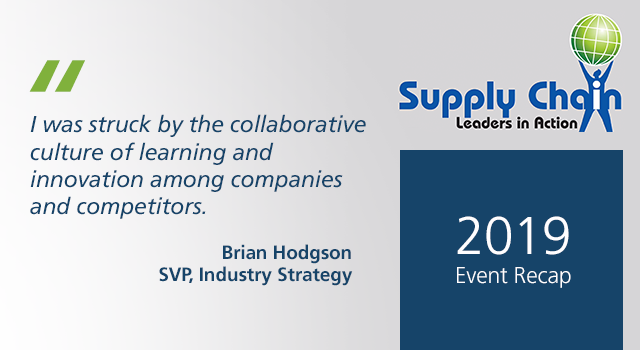
A couple of weeks ago SCLA (Supply Chain Leaders in Action) held its annual conference in Fort Meyers, Florida. The event brings together thought leaders from a spectrum of companies including shippers, road carriers, rail carriers, ports, 3PLs, and software providers. It was my first year attending, and I was struck by the collaborative culture of learning and innovation among companies and competitors. My participation was in the transportation area, and I have summarized the event to help share the insights I took from the event.
Innovation is not just an event. Robert pointed out how one of his CEO customers keeps strategic by taking one day a month to just think.
The session wrapped up with some core constructs in how laggards operate versus more innovative teams. These included:
- Work in silos versus embracing cross-functional teams
- Focus on incremental improvements versus developing breakthrough ideas
- Reward risk-averse behavior versus encouraging risk-taking
- Track operational-focused metrics versus monitoring systematic innovation measures
- Develop an innovation department versus creating innovation culture –> everyone’s job
The grouped recapped some of the issues impacting transportation in the current environment. With the trade war and increased tariffs, many shippers brought in inventory earlier; however, the late spring season is delaying sales and increasing inventories. Is this going to simply delay freight moves and sales, or will these inventories have to be held over until next year? Where is all the inventory going to go? On the capacity front, with the shift from last year’s “capacity crisis” versus this year, what impact is this going to have on the viability of carriers? Did some carriers take on costs (e.g., increased driver wages, fleet investments, ELD installations) that are now creating too much financial risk?
With this backdrop, shippers in the peer group outlined the issues they are working through and questions they wanted to address. These included:
- How to apply technology to help address “the Amazon Effect”
- How to measure the value of “faster shipping”
- How to align with other behavior of stakeholders (merchandising, manufacturing, sales, etc.) with transportation
- How to balance fleet and dedicated carriers with contract carriers and spot market
Additionally, the carriers highlighted the current issues they are dealing with, including:
- Handling capacity and rating swings and insulate themselves from annual RFPs
- Dollars aside, what do shippers want from an RFP
- Next phase of ELD
- New hair drug testing
- Changes in driver training programs
One example highlighted a paper manufacturer whose mills are typically located in rural areas further from metropolitan-based customers. This limited the pool of carriers the company could leverage if it stuck to traditional one-year contracts. However, by digging deeper into the carrier networks and aligning with their needs, the manufacturer could put together three-year agreements, which built up carrier volumes and also allowed the carrier to develop complementary business, thereby making the overall business worthwhile. Also, by sharing data regularly at an executive level, the company achieved better visibility into the dynamics of the transportation market.
